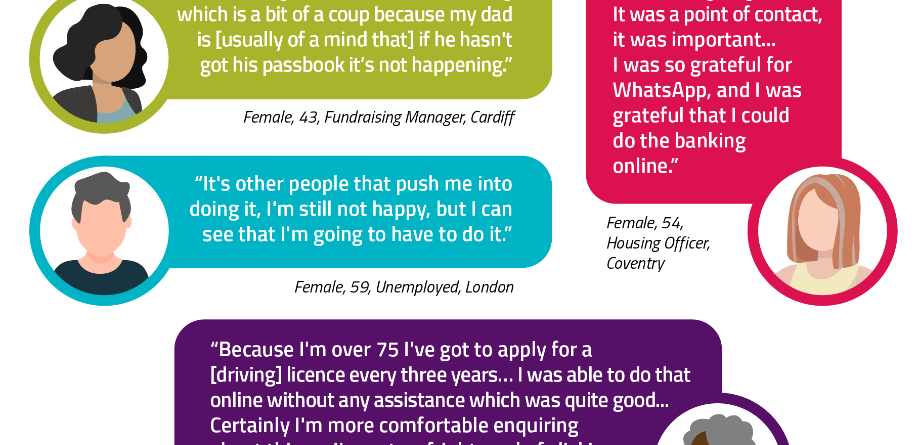Ofcom reports on media use and attitudes 2020/21
According to Ofcom’s Children and Parents: Media Use and Attitudes Report 2020/21, the UK’s digital divide has narrowed over the last year as the proportion of homes without internet access reduced from 11% in March 2020 to 6% in March 2021 (though around 1.5m homes still remain offline). Adults with previously limited digital skills have embraced online shopping, digital banking and video calling friends and relatives – while younger people acted as IT support, helping older or less digitally-confident friends and relatives get connected.
The Adults’ Media Lives study initiated in 2005 to provide a qualitative complement to Ofcom’s research, highlights that having reliable access to home broadband was seen as essential to participants and some expressed gratitude that this had been on the whole consistently available to them during the pandemic. The Childrens’ Media Lives study also provides qualitative information to accompany the data.
Key findings on digital media use and activities:
- A broad range of devices was used to go online. Smartphones were the most likely device, used to go online by 85% of internet users.
- Despite more people going online, the groups least likely to have home internet access are those aged 65+ (18% without access), lower income households (11% without access), and the most financially vulnerable (10% without access).
- Almost half of adults who remain offline say they find the internet too complicated (46%), or it holds no interest for them (42%). For others (37%), a lack of equipment is a barrier. Most people not using the internet at home have asked someone to do something for them online in the past year, known as ‘proxy users.
- Nearly all UK households with school-age children had internet access in the home but a small minority relied on smartphone only internet access. A substantial minority did not have access to an adequate device for online home learning all of the time, and most of these said they managed this by sharing a device with others. Children also relied on media for their entertainment and video-sharing platforms mainly for watching content.
- Parents recognised the value of the internet during lockdowns and 65% thought it helped their child to learn a new skill while about half credited the internet with helping their child to build or maintain friendships.
On digital exclusion:
- New technology was embraced by people who initially had limited digital skills and who became more confident online.
- Narrow internet users (who complete fewer activities online) generally had a lower than average critical understanding of the online environment. Smartphone-only internet users were more likely than average to be narrow internet users.
- 10% of internet users only used a smartphone to go online. This was more likely to be women, among the 25-34 age group and in the DE socio-economic group.
- In 2020, nearly all children aged 5-15 went online. Laptops, tablets and mobiles were the most used devices for going online, used by seven in ten of these children.
- UK households with school-age children (between 4 and 18 years old) had internet access in the home (less than 1% did not have access at home), however, 4% of these only had mobile access (via a smartphone, tethering or dongle/USB, but with no fixed broadband). This decreased to 2% of those with only smartphone access (no tethering).
Last year BSG published its research study The impact of COVID-19 on the digitally excluded undertaken by Savanta ComRes which closely examined the attitudinal challenges that the UK faced in encouraging greater internet adoption by 3.6 million digitally excluded citizens, alongside the financial, and skills-based aptitudes. The research examined the lived experience of 30 respondents during the first phase of the pandemic.




